Primary - (Grade 1 to 5)
Admissions are open throughout the year for like-minded families to join our community. Best Primary School in Bangalore.
The day starts with a lot of smiles and happiness. Children and Teachers congregate, greet each other, they play for a while and start the assembly.
Assembly starts at 8 am. Children chant the Gayathri Mantra, The Great Invocation and sing the National Anthem. They also perform chakral exercises that cleanse and energise their energy bodies and in turn their physical bodies.
Announcements about any visitors, changes to schedules are made. A Sanskrit song is sung for anyone whose birthday falls on that day.
Primary Curriculum
(1st to 5th grade)
This period is when the child enters into the Academic World. We introduce The Experiential Learning concept of “experience, reflect, analyse, express and act to life” through STEAM (Science Technology Engineering Arts and Math) based learning.
It looks at learning as a whole with its practical approach wherein each child will find his identity, meaning and purpose in life through connections to the world around. The activities are designed to cater to different learning styles. The instructional tools and strategies use both group and individual work to co-construct the concept that equips them with higher order thinking skills and collaborative team work.
They also get a platform to present themselves fearlessly to a wider audience that inculcates self-confidence and courage. Circle Time Activities bring in Life skills, Community awareness and Values give children awareness and vocabulary that promote emotional intelligence and provides a non-judgmental platform to share and express themselves on issues that concern them and the world.
This is also a period where we give children ample opportunities, stimulation and resources to practice and perfect their skills in all domains
- Psychomotor – Hands – Skills
- Cognitive – Head – Knowledge and Understanding
- Affective – Heart – Attitudes
Every class is planned to allow children to learn from people, places and experiences. Specific instruction is given to build age – appropriate Academic Skills
The experiences give opportunities to sharpen the skills of communication, negotiation, social skills while helping children to understand the world and calibrate their responses
Domains of Child Development
As we continue to work on the Domains of Child Development mainly Physical, Cognitive, Emotional and Social
The following milestones are what we aim to achieve
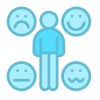
Emotional regulation and development
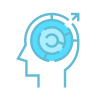
Cognitive Development

School Success
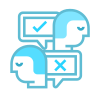
Conflict resolution
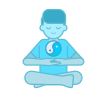
Self discipline
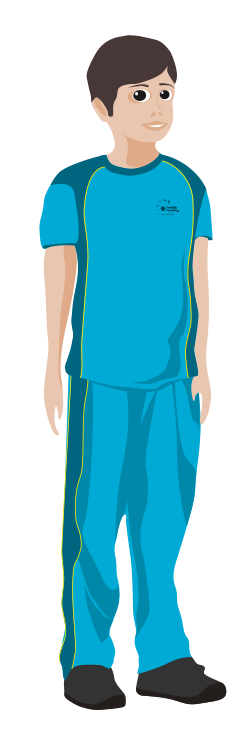
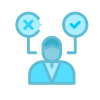
Decision making about good and bad

Language Development
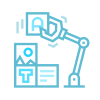
Motor Development
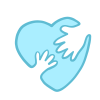
Health Literacy
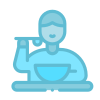
Eating habits
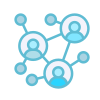
Healthy relationships with peers, family and teachers
The 21st century skill sets
The 21rst century skills targeted and achieved in the Primary Classrooms of Aurinko are the 4 C’s: communication, collaboration, creativity, and critical thinking.
While the Ecosystem in itself promotes other 21rst century skills like Problem solving, Flexibility and adaptability, Global and cultural awareness, Leadership, Civic literacy and citizenship, Social responsibility and ethics and Initiative.
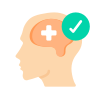
Personal Mindset
- Needs minimal supervision to complete tasks.
- Attempts to complete tasks independently before asking for help.
Follows rules/directions as required by the task/situation. - Maintains focus on tasks despite internal (e.g., emotional) and/or external distractions.
- Avoids actions that have produced undesirable consequences or results in the past.
- Strives to overcome barriers/set-backs, seeking assistance when needed.
- Adapts approach in response to new conditions or other

Collaboration
- Completes tasks as they have been assigned or agreed upon by the group.
- Helps team members complete tasks, as needed.
- Encourages the ideas, opinions, and contributions of others, leveraging individual strengths.
- Provides feedback in a manner that is sensitive to others’ situation/feelings.
- Clarifies areas of isagreement/conflict that need to be addressed to achieve a common goal.
- Seeks to obtain resolution of disagreements/conflicts to achieve a common goal
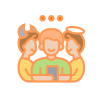
Social Awareness
- Recognizes the consequences of one’s actions.
- Balances own needs with the needs of others.
- Takes into consideration others’ situations/feelings.
- Develops and implements strategies for navigating in different contexts (i.e., manages different patterns of behavior, rules, and norms
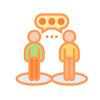
Verbal Communication
- Organizes information that serves the purpose of the message, context, and audience.
- Uses and adjusts communication strategies as needed based on the purpose of the message, context, and audience.
- Signals listening according to the rules/norms of the context and audience.
- Seeks input to gauge others’ understanding of the message.
- Asks questions to deepen and/or clarify one’s understanding when listening to others
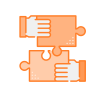
Problem solving
- Defines problems by considering all potential parts and related causes.
- Gathers and organizes relevant information about a problem from multiple sources.
- Generates potential solutions to a problem, seeking and leveraging diverse perspectives.
- Identifies alternative ideas/processes that are more effective than the ones previously used/suggested.
- Evaluates the advantages and disadvantages associated with each potential solution identified for a problem.
- Selects and implements best solution based on evaluation of advantages and disadvantages of each potential solution
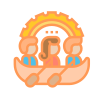
Planning for Success
- Sets and prioritizes goals that reflect a self-awareness of one’s capabilities, interests, emotions, and/or needs.
- Breaks goals into actionable steps.
Accurately estimates level of effort and establishes realistic timelines. - Manages time to complete tasks on schedule.
- Applies existing/newly acquired knowledge, skills, and/or strategies that one determines to be useful for achieving goals.
- Monitors progress and own performance, adjusting approach as necessary.
- Demonstrates a belief that one’s own actions are associated with goal attainment
Characteristics of the Aurinko Primary Classroom
The following are the characteristics of the Aurinko Primary Classroom where the above 21st Century Skills and Development Domains are made possible
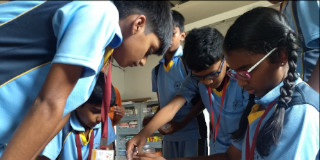
Collaborative Environment
Collaboration fosters the development of new ideas and exposes students to opposing viewpoints.
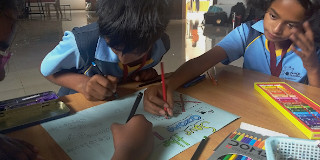
Opportunities for Creative Expression
Focus on STEAM education fosters creative expression which yields surprising outbursts of understanding, but also builds student confidence.
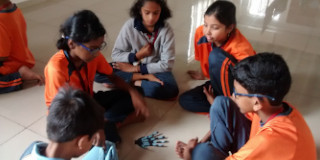
Inquiry Based Approach
The core idea of students approaching a new topic in the context of answering a question is a cornerstone of the Aurinko Teaching Models.
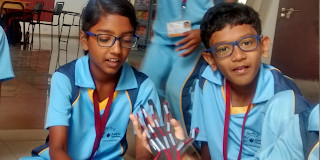
Justification for Answers
We encourage reasoning and encourage Fostering well-developed thoughts encourages students to approach a problem from a number of angles and discover what they truly believe.
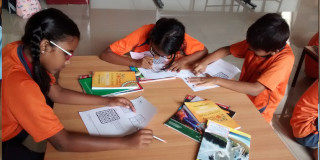
Writing for Reflection
Reflective writing is practiced everyday in every classroom in Aurinko. Self Reflection brings about strong metacognitive reinforcement of learning. The adults are always open to listening to these reflections through the day.
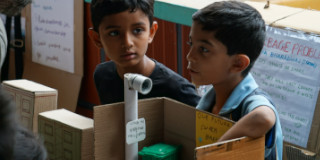
Use of a Problem Solving Methodology
A go-to method of approaching new difficulties aids children through writing a short story or solving a science challenge.
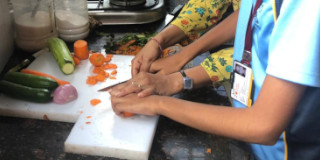
Hands-on Learning
Our Labs, Art Areas, Tinkering Workshops, Toy Workshops all provide our children with another anchor for learning. Our infrastructure allows all areas to turn into labs to try various forms of hands on learning in all subjects. All opportunities to connect and understand the outside world enhance their skillset and hence achievement.
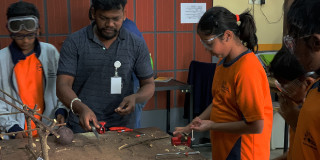
Teacher as Facilitator
Our Teachers co-construct learning with the children. They provide them the setup for learning and work alongside to provide support and encouragement for their personal journey.
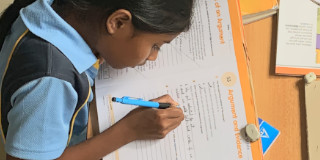
Transparent Assessment
Students perform better and form stronger connections with material if they are able to understand what demonstration of knowledge will be expected of them. Assessments are also diagnostic in nature in Aurinko. They help find gaps and then the children use strategies to fill these gaps. Portfolios, rubrics, and formative assessments help meet this goal.
Our Classes
A typical day schedule

Classes Start
Children move to the classes after the Assembly.
8:30 am
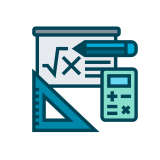
Academics
English, Math, Science, Social Sciences and Languages are classified under Core Subjects.
High School has subjects like Economics, Business Studies, Psychology, Homescience as well.
8:30 – 9:00 am
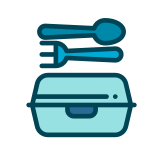
Breakfast/Snack
Breakfast/Snack from Mistea, a healthy kitchen by an Aurinko Parent
9:00 – 9:15 am

Academics / Co-curriculars
Double academic periods for core subjects and one period of sports and one period of Computers
9:15 – 11:55 am
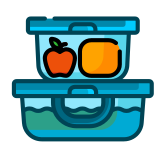
Lunch served from Mistea
Lunch and Snack are socialising time as well as happy times at Aurinko. children are encouraged to eat healthy. A prayer of gratitude is chanted before eating.
11:55 am

Academics, Theatre or workshop
One period for core subjects/theatre/workshop and some days languages
12:30 – 2:30 pm
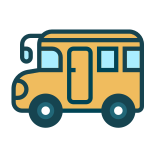
Home Time
Children congregate, greet each other and listen to any announcement. Older children ensure all the younger ones get into buses and leave.
2:30 pm
Ready to Make a Change?
Our team will be happy to connect.
